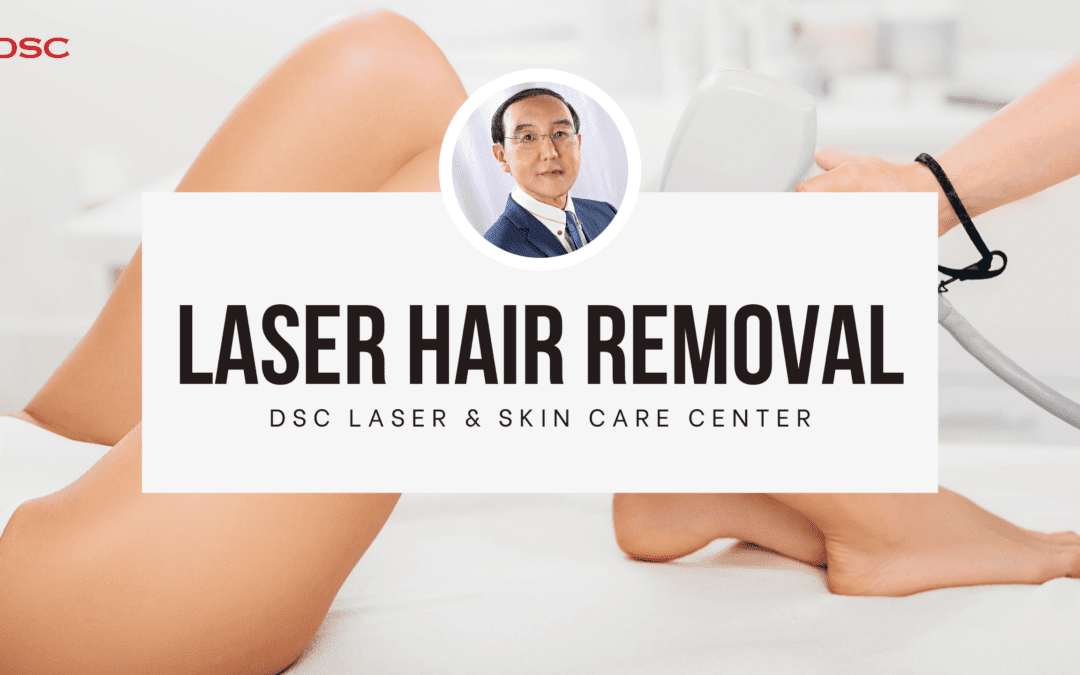Laser hair removal is a quick and convenient solution for getting rid of unwanted hair. If you are tired of the hassle of frequent shaving or waxing, consider laser treatment for unwanted hair!
How does laser hair removal work?
Laser hair removal works by picking up on the contrast in pigment between hair and skin. The laser light attracted to the darker hair and absorbed. It is then translated to heat which damages the hair follicle. This means that laser hair removal generally works best on lighter skin tones with darker hair, as this provides the greatest contrast for the laser to pickup on.
Who is a candidate for laser hair removal?
Because contrast is very important for this method of hair removal, people with darker hair and lighter skin are generally good candidates for laser hair removal. Blonde, gray, or strawberry-blonde hair often cannot be treated with laser because the hair shafts do not contain enough pigment for the laser to differentiate it from skin. Similarly, darker skin with darker hair may not feature enough contrast for laser treatments to be very effective. If you are unsure whether or not you are a candidate for treatment, contact DSC for a free consultation.
Is laser hair removal permanent?
Laser hair removal is considered hair reduction. Huge changes in hormone levels can possibly cause reoccurrence of hair. The only guaranteed permanent hair removal technique is electrolysis, wherein a needle probe is inserted into each and every hair-containing pore to permanently kill hair using electricity or heat. Electrolysis is generally treated on a half hour or hourly basis, and may be suitable for people whose skin types or hair colors are not suitable for laser hair removal.
How many treatments do I need?
The number of treatments necessary depends on the amount of hair in desired treatment areas, frequency of treatment, etc. Expect a minimum of 5-10 treatments for any given area. For areas with denser hair, more treatments may be necessary.
Why do I need multiple treatment sessions?
Hair undergoes several stages in its lifecycle. Laser treatment is only effective when hair is in the growing phase and not in the resting phase. As it is impossible to tell by looking which hair is in which cycle, several treatments are required in order to have significant hair reduction in a given area. Hair will become more and more sparse with subsequent treatments. In addition, density of hair in treatment areas also plays a large role in determining the number of necessary sessions.
How should I prepare for an appointment?
Avoid sun exposure on the intended area of treatment for a minimum of 2 weeks prior to an appointment. Sunscreen should be used daily on areas of treatment in order to prevent hyperpigmentation. Shave treatment areas 24-48 hours before your appointment; do not wax, pluck, or epilate hair (hair root needs to be present for laser to work). If you have recently gotten vaccinations, taken antibiotic medication, have a cold sore, or have been ill, be sure to wait a minimum of 2 weeks before scheduling a laser hair removal appointment. If using any skincare on treatment areas with active ingredients such as retinoids, AHAs, or any pigment lightening creams, discontinue usage a few days before and after your laser appointment.
What does the treatment consist of?
If you choose to do your hair removal laser treatment at DSC, you can elect to have topical numbing cream applied before treatment. Eye protection is provided since the laser light can be damaging to your vision. The laser handpiece is placed against the skin and feels like snapping rubber bands. Some hair may immediately “pop out” immediately upon treatment, while other hair may remain intact but will be pushed out in the days to weeks after treatment.
What aftercare do I need?
Avoid hot water, steam, and saunas for at least 24 hours after laser hair removal treatment. Apply topical hydrocortisone or aloe vera gel to treated areas as needed. You may experience perifollicular edema, swelling of the hair follicles, which looks like goosebumps. Some redness, stinging, or itching may also occur. Hair may or may not fall out during treatment; do not worry if hair does not immediately fall out. Hair that does not immediately fall out during treatment will be pushed out as it continues to grow. Make sure to avoid harsh topicals and shaving treated areas for several days after treatment. Apply sunscreen to treated areas daily, especially if areas are exposed to sunlight.
DSC Laser & Skin Care Center
www.dscbeauty.com
(626)285-0800
info@dscbeauty.com
889 S. San Gabriel Blvd. San Gabriel, CA 91776
